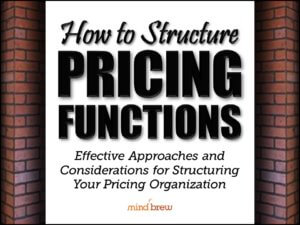In response to the dramatic market dynamics over the last few months, lots of companies have been making some pretty big price moves.
Some companies are increasing prices due to spiking demand and cost inflation throughout their supply chains. For others, however, demand has dried up and they’re lowering prices in an attempt to capture more of the smaller pie.
Now, depending on the specifics of the situation, I might question the “why” behind some of these moves. But today, I want to focus my rant on the “how.”
You see, far too many of these moves…up and down…are being executed in a blanket, across-the-board fashion.
I’ve been there, so I get it. Blanket moves are simple. They’re relatively easy and fast. And if we’re being honest, in situations like these, across-the-board price moves are even somewhat expected internally.
But I can’t help but wonder if people really understand the tradeoffs involved. After all, blanket price moves can be incredibly expensive! They can cost you a ton of money in three different ways:
- For the most price sensitive segments, blanket increases may go too far. And blanket decreases may not go far enough. Either way, you’ll unintentionally miss the mark in these sensitive segments and lose a lot of lower margin sales that could still contribute to profit.
- For the least price sensitive segments, blanket increases may not go far enough. And blanket decreases may go way too far. Again, either way, you’ll end up unintentionally leaving a lot of money on the table where customers are actually willing to pay more.
- And finally, across the board price moves do nothing to address preexisting pricing problems and misalignments. In fact, blanket moves can reinforce or even worsen preexisting pricing issues and discrepancies.
As a result, blanket price moves will inevitably leave money on the table in less sensitive segments…lose profitable sales in more sensitive segments…and exacerbate preexisting pricing problems…all at the same time!
Of course, the better approach is to make surgical moves, based on a robust price segmentation model. With this approach, you don’t just move 5% across the board. Instead, you figure out exactly where you can actually get 7%, 8%, or 10%…and where you might have to settle for just 3-4%.
By using your segmentation model to match the true variations in willingness-to-pay across your business, you can maximize sales and margins in every segment. And while you’re at it, you can take the opportunity to correct any past pricing problems and misalignments.
Granted, the “better way” is not as easy as just moving everything up or down. But if you already have a solid price segmentation model in place, it’s really not that much harder, either. And when you consider all the tradeoffs and unintended consequences, there’s no contest.
















